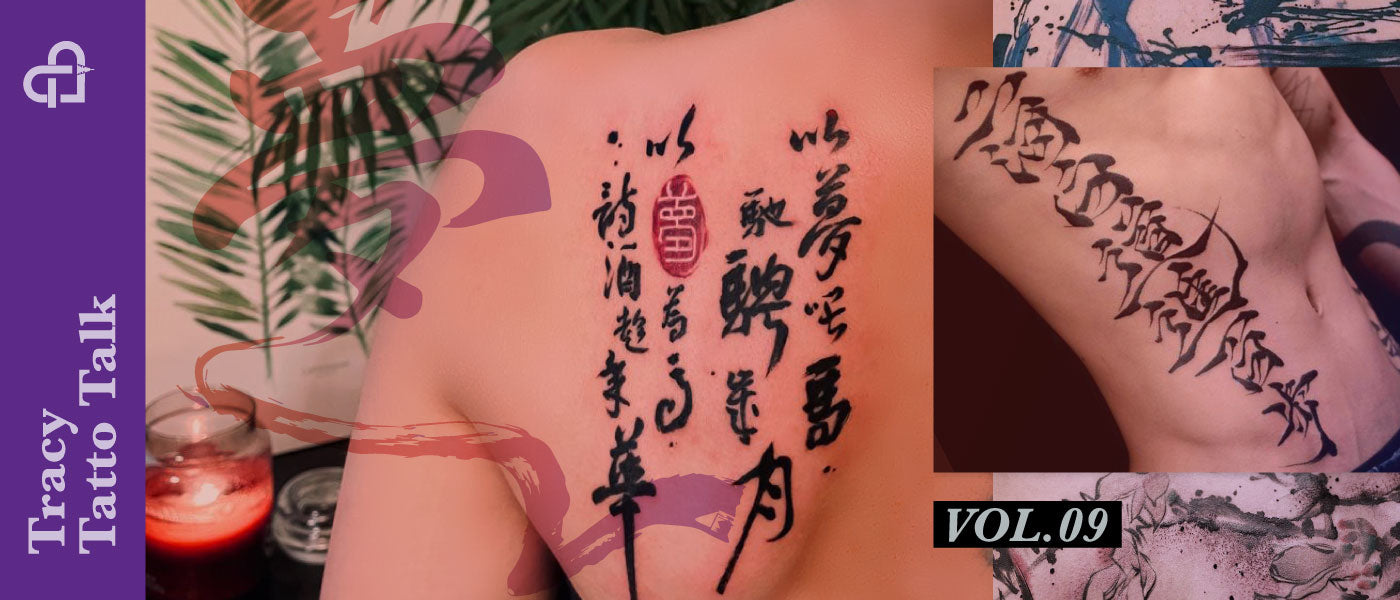Linienführung ist die Grundlage jedes gelungenen Tattoos. Sie definiert Formen, erzeugt Tiefe und lenkt den Blick durch das Kunstwerk. Doch saubere, präzise Linien und absolute Stabilität zu erzielen, ist nicht immer einfach. Es erfordert technisches Können, die richtige Ausrüstung und das Verständnis dafür, wie verschiedene Faktoren das Endergebnis beeinflussen. In diesem Blogbeitrag zeigen wir Ihnen, wie Sie mit hochwertigen Nadeln Ihre Tattoo-Arbeit verbessern und jede Linie präzise und sauber gestalten können.
Die richtige Ausrüstung auswählen
Die Nadel ist zweifellos das wichtigste Werkzeug, um Ihre Vision auf die Haut zu übertragen. So beeinflusst die Wahl Ihrer Nadel die Linienführung:
- Nadelspitzen: Unterschiedliche Nadelspitzen ermöglichen verschiedene Schärfegrade. Konische Nadeln mit ihren sich verjüngenden Spitzen erzeugen feine Linien, ideal für filigrane Details und Schriftzüge. Runde Nadeln mit stumpferer Spitze eignen sich besser für kräftigere Linien und das Auftragen von Farbe. Eine spritzfreie Nadel verbessert Präzision und Sauberkeit und sorgt so für schärfere und definiertere Linien.
- Nadelkonfiguration: Die Anzahl der miteinander verlöteten Nadeln (Liner, Rundnadeln usw.) beeinflusst die Dicke und Farbsättigung der Linien. Eng aneinanderliegende Linernadeln erzeugen dünne, präzise Linien, während lockerere Konfigurationen dickere Linien mit einer leichten Textur ergeben. Die Stabilität dieser Konfigurationen ist entscheidend für eine gleichbleibende Linienqualität während des gesamten Tätowierungsprozesses.
- Nadelmaterial: Hochwertige Edelstahlnadeln bieten im Vergleich zu minderwertigen Materialien überlegene Schärfe, Flexibilität und Haltbarkeit. Dies führt zu einem besseren Tintenfluss, saubereren Linien und weniger Widerstand beim Tätowieren, wodurch Ermüdung reduziert und die Präzision insgesamt verbessert wird. Hochwertige Edelstahlnadeln für medizinische Zwecke und medizinische Kunststoffnadeln gewährleisten höchste Hygiene- und Leistungsstandards. Nadeln, die ihre Schärfe und Stabilität beibehalten, ohne Tinte zu verspritzen, garantieren optimale Ergebnisse sowohl bei filigranen als auch bei ausdrucksstarken Motiven.
- Tintenfluss: Die richtige Tinte hat entscheidenden Einfluss auf das Endergebnis Ihres Tattoos. Hochwertige, leuchtende Tinten mit geschmeidiger Konsistenz eignen sich besser für Linien, und ein gleichmäßiger Tintenfluss ist für scharfe Linien unerlässlich. Hochwertige Nadeln sind so konzipiert, dass sie einen gleichmäßigen Tintenfluss gewährleisten und Kleckse oder ungleichmäßige Linien verhindern. Das Ergebnis sind saubere, scharfe Konturen, die das gesamte Tattoo-Design aufwerten.
Vorbereitungsphase
Die Wahl der Nadel ist zwar entscheidend, aber selbst die besten Nadeln erzeugen keine perfekten Linien. Eine gute Vorbereitung ist der Schlüssel zu optimalen Ergebnissen. Hier sind einige Schritte für Ihren Erfolg:
- Übe deinen Linienfluss: Gleichmäßiger, kontrollierter Druck während des gesamten Strichs ist entscheidend. Zu viel Druck kann dazu führen, dass die Nadel springt und die Linie verzerrt, während zu wenig Druck zu schwachen, unpräzisen Linien führt. Konzentriere dich darauf, eine flüssige, kontrollierte Handbewegung zu entwickeln. Kurze, kontrollierte Striche sind langen, ausholenden Bewegungen vorzuziehen, da diese weniger präzise sind.
- Maschineneinstellung: Optimieren Sie Ihre Maschine für einen reibungslosen Betrieb. Achten Sie auf die richtige Nadelspannung, um übermäßiges Wackeln zu vermeiden. Passen Sie die Hublänge an Ihre Nadelkonfiguration und die gewünschte Linienstärke an. Eine optimal eingestellte Maschine verbessert Ihre Fähigkeit, saubere und gleichmäßige Linien zu ziehen und reduziert das Fehlerrisiko beim Tätowieren.
- Hautvorbereitung: Eine sorgfältige Hautvorbereitung ist entscheidend. Durch das Entfernen von Hautfett und abgestorbenen Hautschüppchen wird eine glattere Oberfläche geschaffen, über die die Nadel gleiten kann. Dies reduziert den Widerstand und trägt zu präziseren Linien bei. Zudem minimiert dieser Schritt das Infektionsrisiko und sorgt für eine bessere Farbhaftung.
Fortgeschrittene Techniken für makellose Linien
- Sättigungskontrolle: Lernen Sie, die in die Haut eingebrachte Farbmenge zu steuern. Stippling, eine Technik mit kurzen, schnellen Punkten, erzeugt weiche Linien mit einem sanften, texturierten Erscheinungsbild. Im Gegensatz dazu werden beim Tightlining dicht gepackte Nadeln mit minimaler Einstichtiefe verwendet, um klare, deckende Linien zu erzielen.
- Mehrere Durchgänge: Für kräftigere Linien oder feinere Details empfiehlt sich der Einsatz mehrerer Durchgänge. Jeder Durchgang baut auf dem vorherigen auf und ermöglicht so eine präzisere Farbsättigung und eine sauberere Linie. Vermeiden Sie jedoch übermäßiges Bearbeiten, um Kratzer zu verhindern.
- Whip Shading: Diese fortgeschrittene Technik nutzt eine schnelle Seitwärtsbewegung, um einen sanften Farbverlauf innerhalb einer Linie zu erzeugen. Sie eignet sich ideal, um Tiefe und Dimension zu schaffen, insbesondere bei realistischen Tattoos.
Abschluss
Saubere, präzise Linienführung ist für Tätowierer ein ständiges Bestreben. Es erfordert Hingabe, Übung und ein tiefes Verständnis der Faktoren, die das Endergebnis beeinflussen. Mit hochwertigen Nadeln, der Beherrschung der richtigen Technik und der Optimierung deines gesamten Tätowierprozesses kannst du deine Linienführung auf ein neues Niveau heben und atemberaubende Tattoos kreieren, die die Zeit überdauern. Denk daran: Die perfekte Linie ist ein Prozess, kein Ziel. Folge T&T in den sozialen Medien für weitere Einblicke in die Welt des Tätowierens und verpasse nicht unseren nächsten Blogbeitrag!




Hinterlasse einen Kommentar
Alle Kommentare werden vor der Veröffentlichung geprüft.
Diese Website ist durch hCaptcha geschützt und es gelten die allgemeinen Geschäftsbedingungen und Datenschutzbestimmungen von hCaptcha.